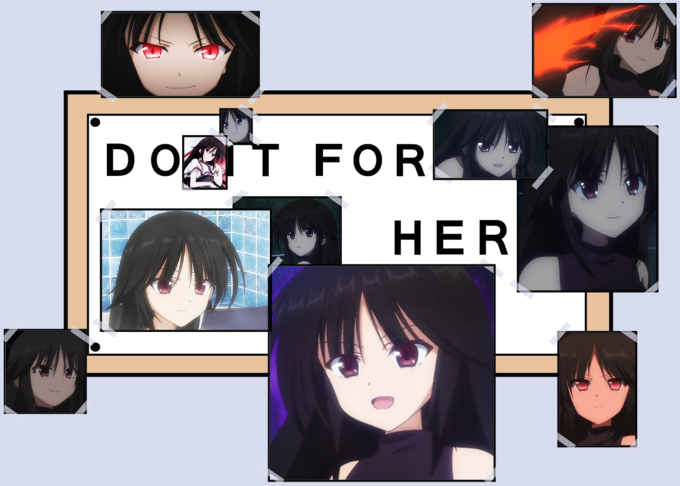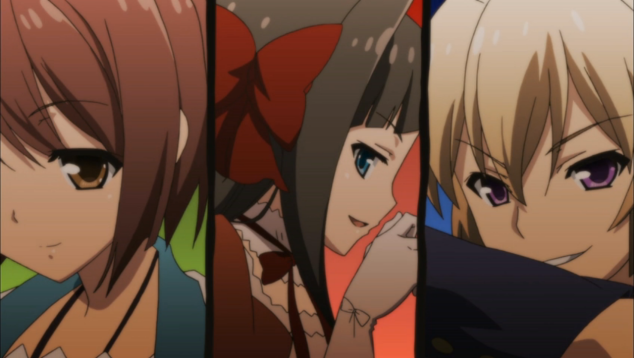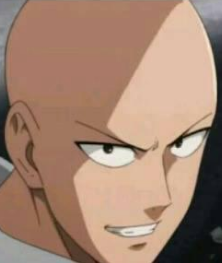Happy holidays from Vouiv-review! I’m happy to announce that Cinq du Soleil: Nouveau has progressed up to Chapter 1 in 2022, just as I had hoped!
For one thing, it has an 11-page Prologue instead of going straight into Chapter 1, a vital part of my plan to make the story more explanation-based than its come-up-with-everything-as-I-go predecessor. This might beg the question, “Why not publicize the Prologue sooner so that the public wouldn’t have to wait 20-ish months for a follow-up to the March 2021 Monthly Musing?” Well, for starters, I didn’t expect for Chapter 1 to take so much effort, let alone wind up a whopping 162 pages long. (That’s about half my current progress on the original Cinq du Soleil.*) Second of all, when I got to Interlude 1-7, I noticed that I had at first failed to realize that Roissy Airport was not outside of Paris, so I’m glad in retrospect that I didn’t embarrass myself by putting it out too hastily. (Admittedly, the cultural aspect of French class is the only thing I ever really struggled with. Long live Wikipedia, eh?)
*henceforth CdS:A, with the ‘A’ standing for “Ancien” (antonym of “Nouveau”)
Moving on, based on the light novels that I’ve read, I felt inclined to start splitting my Chapters into Parts, starting with one to give a feel for the curriculum, one for each member of Cinq du Soleil, and one dedicated to the advent of the troupe. I mean, CdS:A Chapter 13 is split into parts (one for each heroine), but I’m talking about normalizing the structure rather than making it occasional. Besides, Chapters in CdS:A typically range from 10-20 pages and peak at about 35 (in LibreOffice Writer), and considering Parts 1-3 of CdS:N Chapter 1 all fell within the typical range, I figured that the subsequent parts would too. This did not come to pass in the end; instead, Parts 4-7 all fall within the 20-30 page range, with a zenith of 30 and a nadir of 24, hence my earlier remark about the grand total Chapter length. Just goes to show that I’m not fond of constraining Chapters or Parts to particular lengths, primarily because all the wordsmithing I dedicate to minimizing the repetitiveness of my writing is already enough of a challenge as it is. (To give an idea, Part 7 felt like a breeze to write compared to Parts 3-6, perhaps also partly because it was easier to plan ahead for Part 7.) But, in reality, all this rambling about Chapter/Part length stems from my questioning the page length discrepancies, which perhaps in this case can be addressed with a bit of analysis. (Not yet, though, because I don’t want to spoil too much before I link the document.)
Another notable development since March ’21 is that I changed the name of the Métal, originally Magnus, because I wanted to avoid any resemblance to the Kid Icarus character. It first changed to Mark when I started Part 6, but I promptly found it too generic and figured it would be more fun to name him Tobias so that he could be nicknamed Toby on a case-by-case basis, namely close friends (including his sister) and immutably stubborn acquaintances. Part of the reasoning behind this nomenclature, both previous and current, is that I wanted the protagonists’ names to sound mostly different from each other; this took my mind in a Latin direction at first, but then I shifted to biblical for no particular reason. Also in part, the protagonists’ first initials originally spelled out GAMES (Guy, Aka, Magnus/Mark, Ella, Sumire) or MAGES, but now they spell out GATES or STAGE. (Just a bit of trivia that sometimes surfaces in my mind.)
I think that about covers it for the information I can give while keeping spoilers to a minimum. So, without further ado, here is what I would like to call my Christmas present to the public!
(I typically don’t post to this blog until the end of the month, but the document has been finished for about four days, so I figured, “Why not make this a special occasion for the holidays?”)
https://drive.google.com/file/d/1CBa8EmsxV6zyRSvpqMiJPcGEI5IanQLy/view?usp=sharing
Now, it’s best to not read beyond this point of the blog post until after reading the Prologue and Chapter 1, linked above. Let no one say I didn’t warn them.
On the subject of analyzing CdS:N Part lengths, it stands to reason that Guy Dupont has the most pages dedicated to him (33 = 18 + 15, the collective total of Parts 1 and 2, the latter having fewer pages because of the reduced worldbuilding and other lore), because of all the details in the single-element curriculum that were omitted in Parts 3-6 for the sake of brevity. Second to that obvious factor is the clique size of each protagonist. Aka Mitsurugi, the protagonist corresponding to the merely 19-page Part 3, was one of only three. Tobias Armstrong, one of four like Guy, wound up with a 24-page Part 6. Sumire Ohzora and five other Eaux starred in a 29-page Part 5, placing third among the protagonists. Ella Armstrong, the runner-up of the 30-page Part 4, technically started out in a clique of only three, but a rivalry between her and a particular other Terre (upon whom I will elaborate later) escalated to involve the entire class of inaugural Terres (but, obviously, only a handful are mentioned in particular) and become what I see as the most eventful sub-story in Chapter 1. As for Part 7, it came between Tobias and Sumire with 25 pages, because even though it lasted less than a day, it involved a vast multitude of characters and has the second-longest interlude so far. (Yes, interludes are included in the page lengths.)
(I won’t bother giving CdS:A Chapters the same treatment, at least not for this post.)
Now to clarify the “other Terre.” Aka, Ao, and Midori are part of a series of color-based characters influenced by the clan Cinqueleur from Final Fantasy Tactics A2. (In the French translation, its members are named after Japanese colors: Aka, Ao, Midori, Shiro, and Kuro.) Beyond the inspired five are the Chroma Rangers, among whom only Ki Kotegawa (formerly Kagayama) has been featured in any of Chapters 1-13 of CdS:A. The other four—Murasaki Sakimori, Daidai Shinryuu, Kasshoku Takai, and Tankoshoku Shiba (formerly Aragi)—I planned to introduce in Chapter 15, but that chapter is the biggest uphill climb in CdS:A history, not to mention one of the main reasons for my transition to CdS:N. (Shiro and Kuro also have different last names, Kuzehashi and Shibushi (as opposed to Konoe and Shoga), which are notable in each starting with the same syllable as their partner’s first name.) However, when I came up with the plot for CdS:N, I figured that the ten color-based characters would make the perfect foundation for the new Solluna, hence their way earlier introduction in the Prologue. (Side note: I made sure to clarify their sizes early on, and Aka is a gremlin instead of an average-sized woman.) Since Taiyoh is where Chapter 1 takes place, the five unfortunately left in the dark (so to speak) were Tankoshoku, Midori, Daidai, Ao, and Kuro. As for the other five, with Aka obviously being a protagonist, Murasaki turned out to be a tertiary ally, Ki a deuteragonist, Kasshoku (the “other Terre”) an archrival, and Shiro the same as Murasaki.
I also figured that the Asahina sisters and mother from CdS:A could use a CdS:N counterpart with a Tsuki counterpart, hence the Tailors Taylor and the Jordan Army. The parents, Taylor Taylor and Jordan Jordan, have names that I’ve seen as first and last alike (e.g., Taylor Swift, Chuck Taylor, Jordan Feliz, Michael Jordan), but with both positions filled by the same name. This gimmick stems from my vague memory of a Fairly Oddparents character named Britney Britney, and I originally had a Jordan Jordan as one of the thirty-two filler names in the 64-entrant tournament planned for CdS:A (the basis of Chapters 15-20), but I intend for the Tailors Taylor and the Jordan Army to be much more prominent. (It’s a shame that the latter group name does not work as well as the former.) As for the children, they are like the Chief Elementals in being named for some aspect of their affinity: Bert sounds like “burn,” James sounds like “Thames,” Laura sounds like “laurel” (a bit of a stretch), Pete is derived Peter meaning “rock,” Julia is from “jewel,” Edith sounds like “eat it” (as made evident by a certain chapter of Captain Underpants), Rudy has a sound like “root” in it, (I’m not sure about the next three) Lyra sounds like “wire,” Chelsea sounds like “shall see,” and Lester has a “less” sound in it. Just as in the case of the color-based characters, Taylor Taylor and the Jordan children have yet to be introduced, but they have been mentioned particularly in Part 3 and Interlude 1-5 respectively.
(Aside: My personal favorite name in the story so far is Lucas Rakan, a pair of names that both sound vaguely like the French word “requin” meaning “shark.”)
As another consequence of the focus of Chapter 1 on Taiyoh, the Lunar Brigade has not yet been introduced. I expect Chapter 2 to wind up the same way (but potentially be shorter) and for Chapter 3 to be when the protagonists advance to the Great Wall of Solluna (formerly Solluna Valley), so instead of transitioning directly from Chapter 2 to Chapter 3, I intend to branch out to another side series that will give Tsuki the same treatment given to Taiyoh in Chapters 1 and 2. Lest I reveal too much too soon, all I have left to say regarding future follow-ups is that the plot that I have in mind for Chapter 2 is influenced by Tales of Zestiria.
Speaking of influences, I like talking about them, so how about a few more?
- In the vein of Tobias’s name changes, I also considered changing Ella’s name, specifically because a part of my mind misconstrued it as a fusion of the names Ellis and Edna, which notably belong to characters from Seirei Tsukai no Blade Dance and Tales of Zestiria respectively. (best Tales character, by the way) However, as part of the rivalry between Ella and Kasshoku, I had the latter call the former “Devil,” and I can’t think of a more fitting base name for a nickname like that. Just some context for the actual “influence” in this bullet point: This rivalry, while I had originally intended for it to resemble the one between Yozora and Sena from Haganai, turned out closer to the dynamic between Velvet and Eleanor from Tales of Berseria, the more I wrote it out. (best Tales game, by the way) Not to call it a lesser outcome; just putting it out there.
- More of a “reverse influence” if that makes sense, but the number one Eau was originally named Anya Tran, that is until the animated adaptation of SPY x FAMILY popularized the name Anya in a way that I could never have imagined. (Don’t get me wrong; I enjoy the anime in question.) From there, she became part of a gimmick that I had come up with, namely female names besides Aka that start and end with ‘a’ (in a similar vein to the CdS:A Asahina family members, whose names all end with “-ri” and are not Kaori*); thus, I changed her first name to Alma.
*This nomenclature stemmed from Mari, whom I named on a whim. Kaori is one of the CdS:A heroines. - The tendency of Aka to dress frugally and wear red-striped panties (ever since CdS:A) is inspired by Mea Kurosaki from To LOVE-ru Darkness. (Her dialect, not so much; just a random quirk.) I’ve been reading through the manga on a whim, so I wonder if some other aspects of the influence could rub off; for instance, the playfulness came naturally, but the unusual obsession with being licked has not.
Phew, that’s all I have to babble about for now. I look forward to seeing this story through until I fall into a slump, which hopefully won’t happen in the foreseeable future.
À la prochaine! (Until next time!)


















You must be logged in to post a comment.